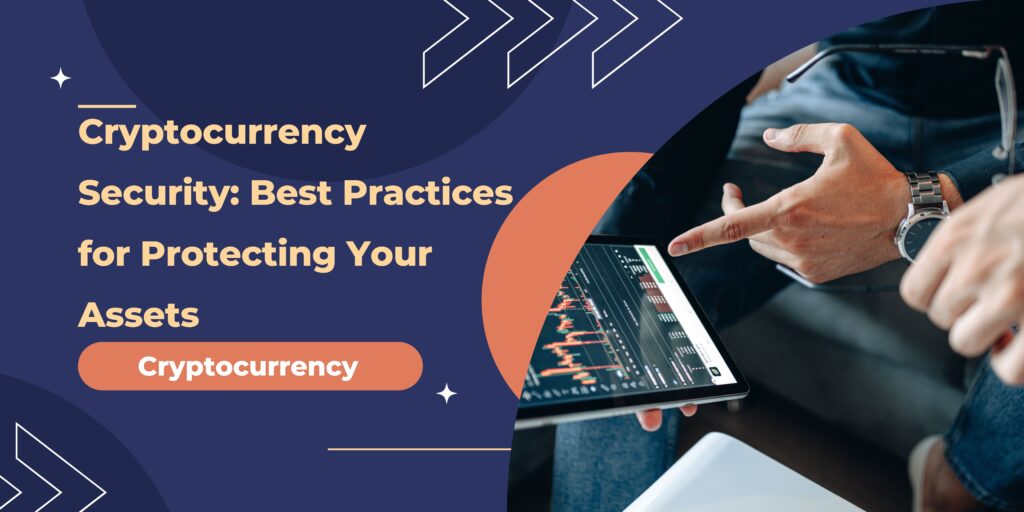As the popularity of cryptocurrencies continues to rise, so does the importance of implementing robust security measures to protect digital assets from theft, hacking, and other security threats. In this guide, we’ll explore best practices for cryptocurrency security, equipping investors with the knowledge and tools needed to safeguard their assets in the dynamic and often unpredictable cryptocurrency landscape.

Secure Wallet Management
The foundation of cryptocurrency security begins with secure wallet management. Investors should choose reputable wallets with strong security features, such as hardware wallets or reputable software wallets with robust encryption and two-factor authentication (2FA). Hardware wallets, in particular, offer an extra layer of security by storing private keys offline, making them less vulnerable to hacking attempts.
Additionally, investors should create strong, unique passwords for their wallets and enable additional security features such as biometric authentication or passphrase protection. Regularly updating wallet software and firmware is also crucial to patch any security vulnerabilities and ensure maximum protection against potential threats.
Phishing and Social Engineering Awareness
Phishing and social engineering attacks are common tactics used by hackers to trick cryptocurrency users into revealing sensitive information or transferring funds to fraudulent accounts. To protect against these threats, investors should be vigilant and cautious when interacting with emails, messages, or websites requesting sensitive information or prompting actions such as password resets or account verification.
Verify the authenticity of communications by double-checking sender email addresses, domain names, and website URLs for any signs of spoofing or impersonation. Avoid clicking on suspicious links or downloading attachments from unknown sources, and always verify the legitimacy of requests before taking any action. Education and awareness are key to preventing falling victim to phishing and social engineering attacks.
Multi-Factor Authentication (MFA)
Multi-factor authentication (MFA) adds an extra layer of security to cryptocurrency accounts by requiring users to provide multiple forms of verification before gaining access. Common forms of MFA include SMS codes, authenticator apps (such as Google Authenticator or Authy), or hardware tokens. By enabling MFA on cryptocurrency exchange accounts, wallet applications, and other platforms, investors can significantly reduce the risk of unauthorized access, even if their passwords are compromised.
Additionally, investors should consider using hardware-based MFA solutions for added security, as they are less susceptible to phishing attacks and malware compared to SMS-based authentication methods. By implementing MFA, investors can enhance the security of their cryptocurrency accounts and protect their assets from unauthorized access.
Cold Storage and Offline Backup
Cold storage refers to storing cryptocurrency assets offline, away from internet-connected devices, to mitigate the risk of hacking and unauthorized access. Hardware wallets and paper wallets are popular cold storage solutions that provide enhanced security by keeping private keys offline and out of reach of potential attackers. Investors should consider transferring a portion of their cryptocurrency holdings to cold storage for long-term storage and security.
Additionally, creating offline backups of wallet seeds, private keys, and recovery phrases ensures that investors can regain access to their funds in the event of loss or theft of their primary wallet. By adopting cold storage and offline backup practices, investors can protect their assets from online threats and ensure resilience against unforeseen circumstances.
Regular Security Audits and Updates
Regular security audits and updates are essential for maintaining the integrity of cryptocurrency security measures. Investors should periodically review and assess the security of their wallets, exchanges, and other cryptocurrency-related accounts to identify any potential vulnerabilities or weaknesses. Stay informed about the latest security threats and best practices by following reputable cybersecurity blogs, forums, and news sources.
Additionally, promptly install software updates and security patches for wallet applications, operating systems, and other software to patch any known vulnerabilities and strengthen defenses against emerging threats. By staying proactive and vigilant, investors can stay one step ahead of potential attackers and safeguard their cryptocurrency assets effectively. Regular security audits and updates are critical components of a comprehensive cryptocurrency security strategy.
Legal and Regulatory Compliance
In addition to technical security measures, investors should also consider legal and regulatory compliance when managing cryptocurrency assets. Familiarize yourself with local regulations and compliance requirements related to cryptocurrency ownership, trading, and taxation. Ensure that you are using reputable and compliant cryptocurrency exchanges and wallets that adhere to industry best practices and regulatory standards. By complying with legal requirements and best practices, investors can mitigate the risk of regulatory scrutiny, financial penalties, and legal consequences associated with non-compliance.
Additionally, consider consulting with legal and tax professionals to ensure compliance with applicable laws and regulations and mitigate potential legal and financial risks associated with cryptocurrency ownership and trading. Legal and regulatory compliance is an integral aspect of cryptocurrency security and risk management, ensuring that investors operate within the bounds of the law and protect their assets from potential legal and regulatory challenges.
Conclusion
Cryptocurrency security is paramount in protecting digital assets from theft, hacking, and other security threats. By implementing best practices such as secure wallet management, phishing and social engineering awareness, multi-factor authentication, cold storage and offline backup, regular security audits and updates, and legal and regulatory compliance, investors can safeguard their cryptocurrency assets effectively.
Remember that cryptocurrency security is an ongoing process that requires vigilance, education, and proactive measures to stay ahead of evolving threats. By prioritizing security and adopting best practices, investors can protect their assets and enjoy peace of mind in the dynamic and rapidly evolving world of cryptocurrencies.



